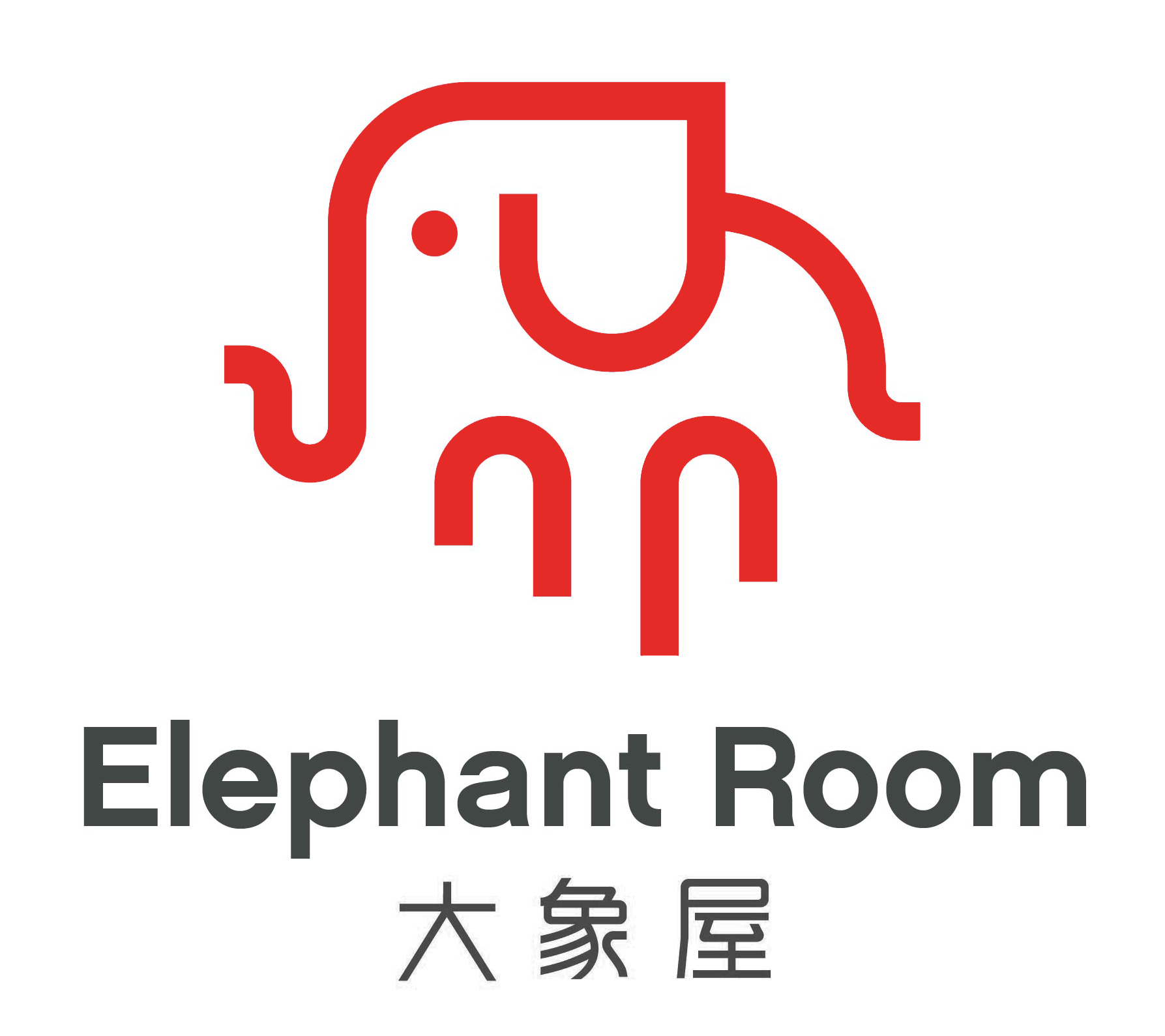
Welcome to China Creative Story, part of our investigative project at Elephant Room to find and understand the creative force behind China's commercial and cultural inno/renovation.
Exclusive Interview: How China's Ancient Forbidden City Profited Through Creativity
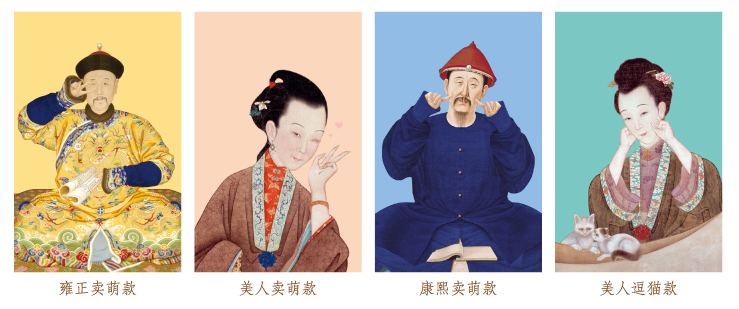
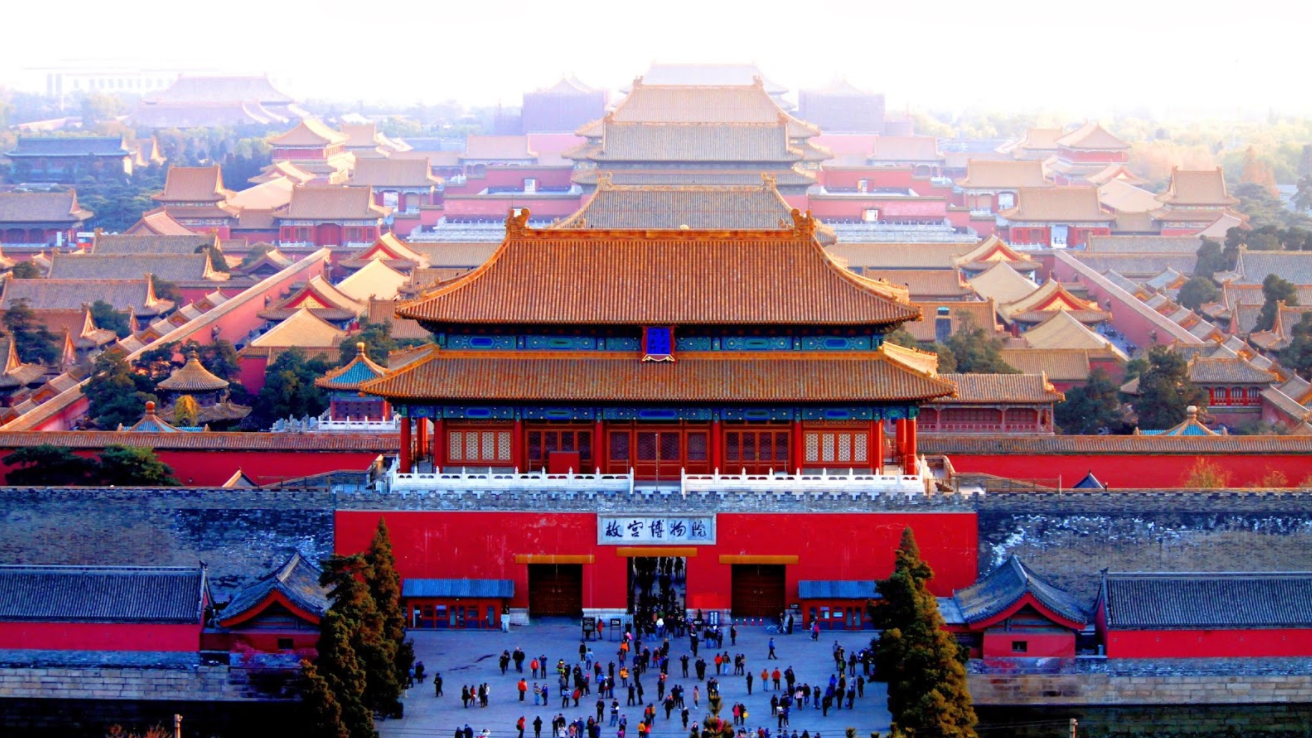
The Forbidden City, now also housing China's National Palace Museum, is the home and ceremonial center of Chinese emperors during Ming and Qing dynasties (1420-1912). It covers a total area of 178 acres, consisting of 90 palaces and courtyards, 980 buildings and 8,704 rooms. The Forbidden City was declared a World Heritage Site in 1987, and is listed by UNESCO as the largest collection of preserved ancient wooden structures in the world (source: wiki).
As two girls grew up in Beijing, the Forbidden City has always occupied a special place in our hearts. For us, it is not only a historical landmark with extremely stunning architectural heritage, but a fortress hosting our Chinese cultural identities, connecting the nation's rich ancient past with the present and the future.
We were extremely thrilled to have the exclusive opportunity to talk to two of the National Museums' current staffs about the topics that we've been super curious about - the big, ancient Museum's recent rebranding through creative merchandizing and its embracement of social media.
Please join along and enjoy the story,
Best,
Biyi & Yan
![]()
3.21.2007
National Palace Museum,Beijing, China
![]() Elephant Room interview with:
Elephant Room interview with:
Mr. Chen Fei, Cultural Products and Service Department
Ms. Liu Hui, The Forbidden City Publishing House
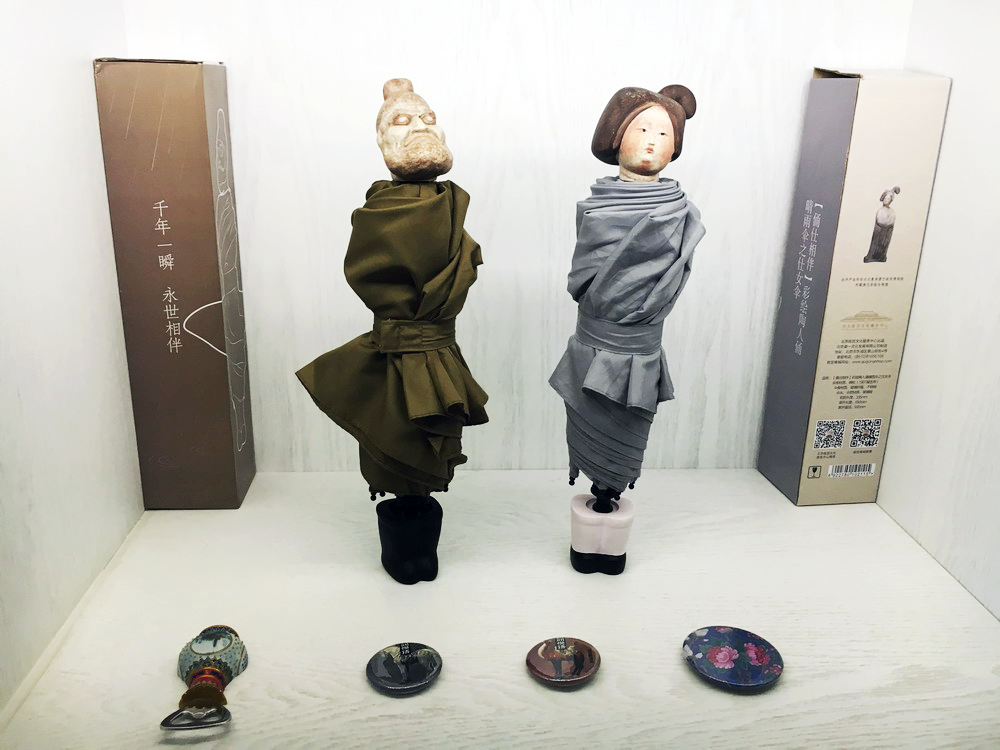


Before heading in for the interview, me and Yan had a quick browse at the Museum's recently renovated merchandize shop and WE. COULD.NOT.GET.OVER.THESE.ADORABLE.PRODUCTS.
![]() Elephant Room: How are the museum merchandises being developed? I am super curious about the designing process!
Elephant Room: How are the museum merchandises being developed? I am super curious about the designing process!
Mr.Chen: There are normally four stages involved for developing a new merchandize:
-Brainstorm. every month we hold brainstorm sessions of which department heads from Management, Operation, Information Technology and Design all sit down to explore new product possibilities.
-Design: once we conceptualized a new product, the design team will find designers to start drafting and making prototypes. It could be either our in-house designers or someone from our partnership companies - they have to be trained first though to understand the historical elements our products are carrying. The bottom line is that all of the designers for our products have to appreciate culture: if they don’t understand culture, they can’t design good products. All the designs will then go through several revisions before being approved for manufacturing-it could take weeks or months depending on the type and importance of the product.
-Retail: every new product in our shops will have a 3-month trail-sale period. If customers like it then we produce more, if sales are not as expected we’d adjust strategies such as relocating it to other stores. If sales didn't go up after 3 more months, we’d communicate with our manufactures to check quality issues or negotiating for a discounted price. If it's not going well in 9 months, we’d kill the product and you know, move on.
-Revision: this ties with the first stage, before every brainstorm session we will first look at sales data from the previous month, analyze trends and discuss new strategies. One thing we’ve been trying to do is to get rid of the over-saturated product categories, for example, bookmarks-we’ve produced so many bookmarks in the past they are no longer creative nor attractive to the market. So no bookmarks anymore for at least the recent future! (laugh)
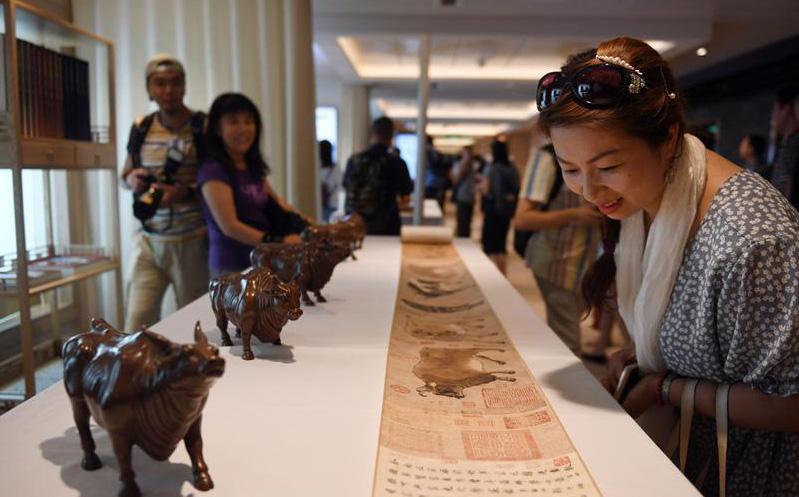
The Museum recently opened several boutique stores selling various creatively designed, culturally rich merchandizes.
![]() Elephant Room: How do you balance your retail strategies between online and physical stores?
Elephant Room: How do you balance your retail strategies between online and physical stores?
Mr. Chen: It’s interesting how so many people think we are online-focused, but in reality we’ve always been centered on physical stores. Like mentioned, here at the Museum we consider retail to be part of public service in general: although we are now much more commercialized and selling more products, the core value is still to serve our visitors. This never changes.
Out of more than a 1000 items in our physical retail locations, we’d pick like 200 to put on our Taobao and T-mall stores online. Both channels have their own limitations and should carry products accordingly. For instance, large, heavy items are difficult to travel with for tourists, so we normally put them online instead of in physical stores.
Ms. Liu: Over the past two years online sales have taken off incredibly fast. Last year our online channels contributed over 40% of the total sales, yet two years ago the number was still less then 10%. Of course we are happy about the growth, but we wouldn’t shift our commitment on physical retail. It’s not just about selling more things, for us, physical stores are the window to showcase the Museum’s culture and history, this is always our top priority.
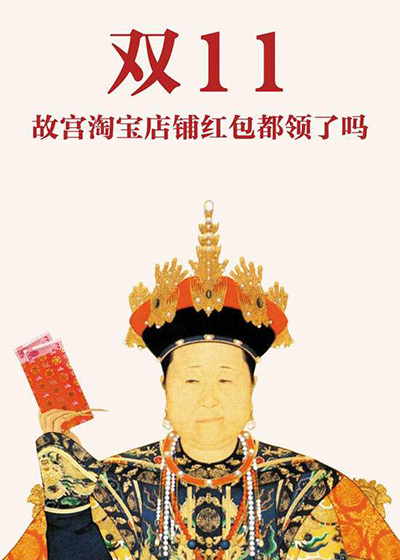
"Have you picked up Red Packets from the Forbidden City?" A photoshop-ed promotional image used by the Museum store for last year's Taobao Single's Day sale event.
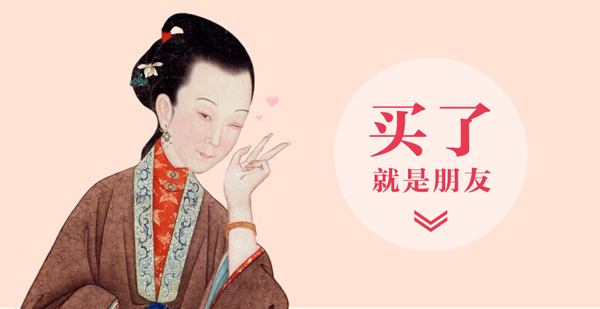
Another humorously designed image on the Museum store's front page, "We will be friends if you place an order."
![]() Elephant Room: What items are the most popular online?
Elephant Room: What items are the most popular online?
Ms. Li: For our T-mall shop, the top sellers are calendars and notebooks.
Mr. Chen: in our Taobao shop it’s tapes. We noticed in recent years a lot of young people especially girls like to write journals, (Yan&Biyi: hell yea! We love it) they are always carrying small notebooks around and decorate with cute accessories. So we designed different tapes inspired by ancient Chinese patterns, calligraphies and fun quotes, many sold out within a few days.
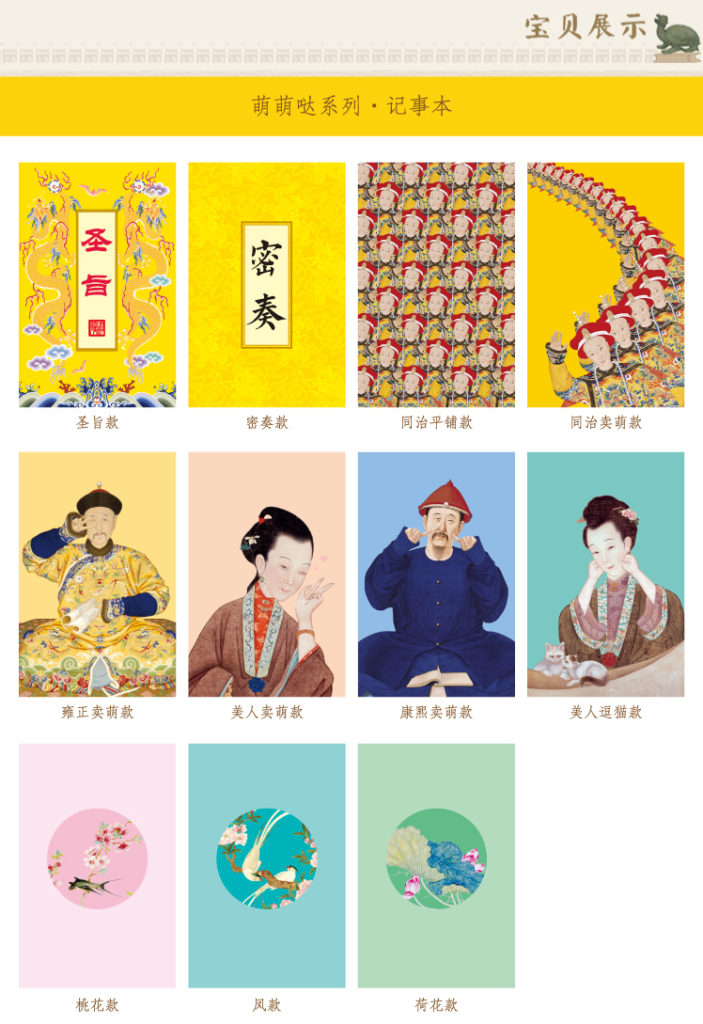
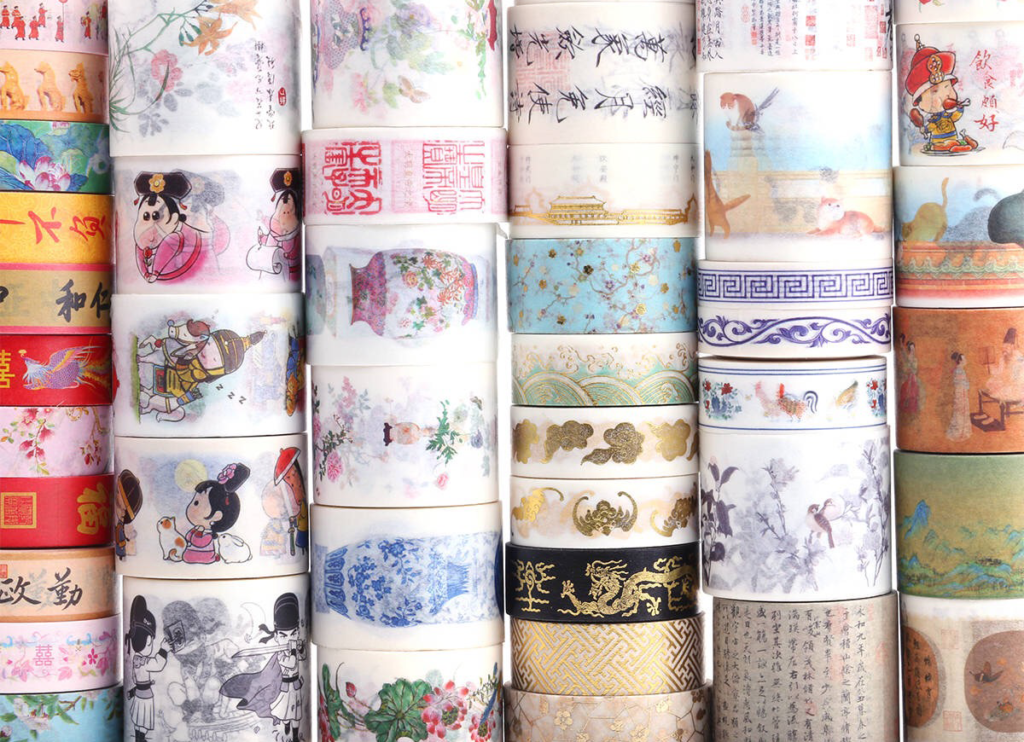
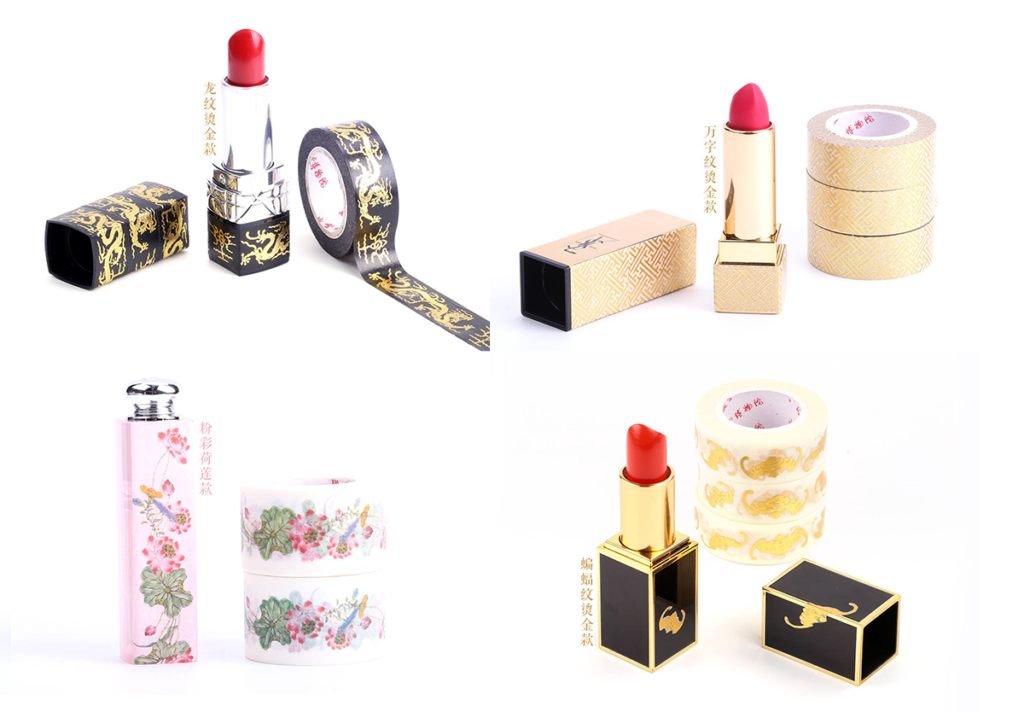
Notebooks and taps are always among the top sellers in the Museum's online shops, and these tapes-on-lipstick ideas are simply stunning!
![]() Elephant Room: So have you noticed costumers’ taste changing?
Elephant Room: So have you noticed costumers’ taste changing?
Mr.Li: Definitely. I think in general Chinese people are becoming a lot more cultural-conscious, they don’t just come to us to take photos in the Forbidden City, to see where the Emperor used to sleep that kind of stuff. Nowadays people come to see exhibitions and want to have an integrated cultural experience, and our shops become part of that big experience.
In 2015 during the Stone Moat Treasure Exhibition, (Shiqu Baoji) we designed some merchandizes and sold them in a tiny corner shop next to the exit. That exhibition went crazily popular, (Yan: Yes…I was told the wait was over 2 hours and still couldn’t get in!) and we sold more than 120,000 RMB of products within one day. It was completely out of control - from my memory no exhibitions had received that kind of popularity in the past! Internet definitely helped a lot in spreading the words. People were so used of the Forbidden City to be this mysterious, solemn existence - once they realized it has a lot more to offer and has been renovating itself, they just naturally want to visit more.

Just another packed day inside the Forbidden City. (CNN)
![]() Elephant Room: From what we've learned, the museum’s commercial shift has received incredibility positive feedbacks. Everyone is loving the new merchandises and thrilled to see a more creative, young Forbidden City. How do you feel about that?
Elephant Room: From what we've learned, the museum’s commercial shift has received incredibility positive feedbacks. Everyone is loving the new merchandises and thrilled to see a more creative, young Forbidden City. How do you feel about that?
Mr.Li: From our perspective things really happened naturally. We never did any social media marketing or promotion, like I said, this whole sell-as-service doctrine has been there since 1952 when our department was created. So the e-commerce side of things really are just the icings on top of cake, we are never profit-driven, but glad to see costumers loving what we came out.
I’ve heard some people worrying that the Museum might be going too “cute” or too “down-to-earth”, personally I don't think that’s a bad thing. The image of the Forbidden City had been too heavy in the past, it is time to make some changes and help young people to access and understand ancient Chinese culture better.
For a very long time the main focus of our merchandise is to make replicates, you know, those famous jars, paintings, jewelries from the museum collection, we make them into souvenirs for the mass market. They were costly to manufacture and didn’t sell very well-so we tried new things such as toy dolls, and things took off from there. Our museum’s current director, Mr. Shan has always told us to make products that are useful to people, he required everyone in the merchandize team to study life, and to come up with products that are functional as well as aesthetically appealing. Everything we sell must carry three elements: culture, story, and tradition. Chinese culture is a very well-crafted, profound system, it is tangible and spiritual at the same time. We must balance history and modernity, and reflect that in what and how we sell.
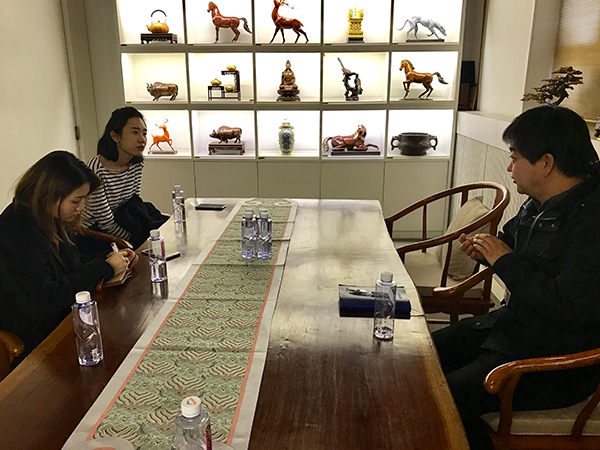

Background: How China's National Palace Museum Became Millennial's Favorite Social Media Star
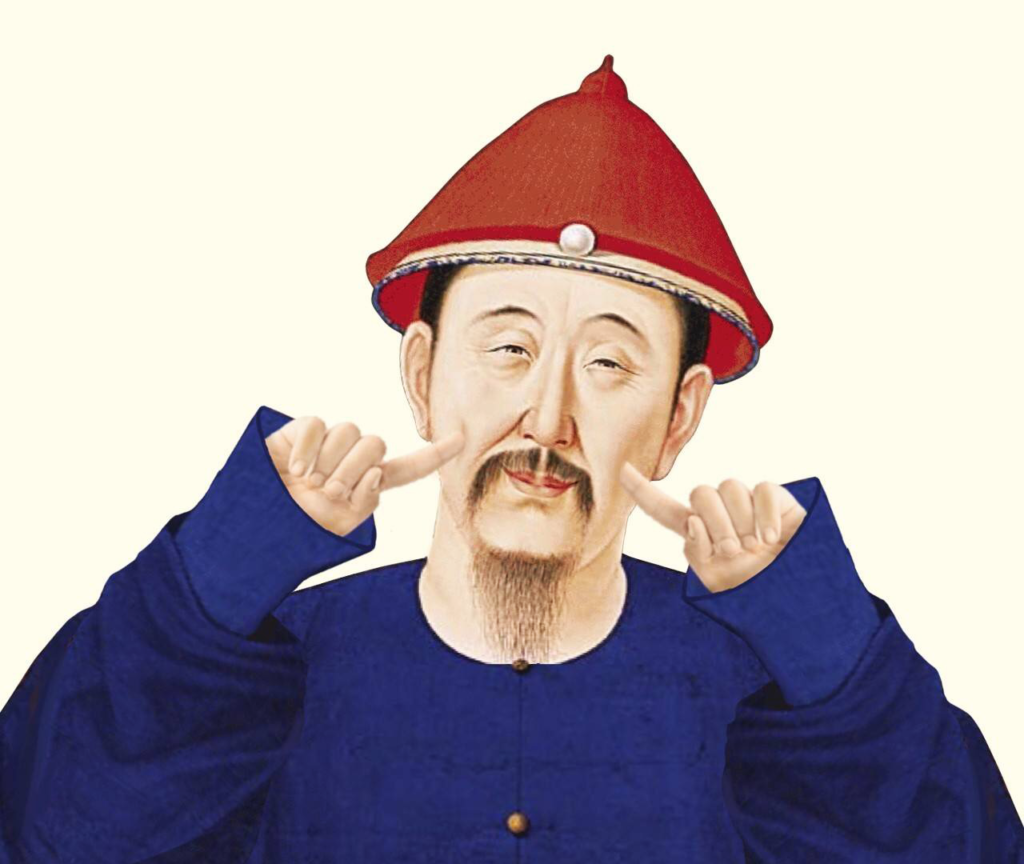
A decade ago, the Palace Museum was still considered merely an over-popularized touristy attraction: despite its vast collection of ancient treasures and literal documents, most Chinese people would only visit because of the Forbidden City's glorious outlook, and few paid attention to what were actually inside (as the director of the museum Mr.Shan Jixiang put it, “there are more who came as a tourist rather than a museum visitor”). This is no longer the case however, as the Museum has successfully renovate itself to become the modern carrier of Chinese people’s passion for history, thanks to its embracement of digitalization and creative merchandizing.

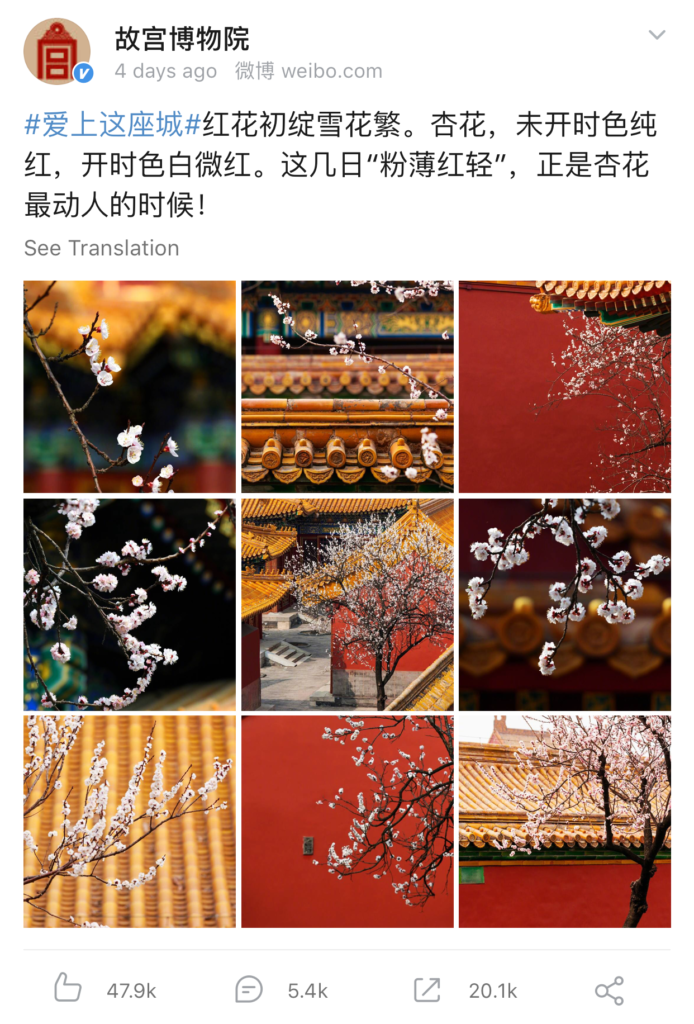
The National Palace's Museum currently have over 2mil followers on Weibo, and its posts often draw tens of thousands of comments, likes and reposts as this one did.
A Brief Recap on the Museum's History of...Selling Things
For over 600 years the Forbidden City has been the sacred, mysterious residence of the emperors, and only those with power were allowed to go in. Therefore when it was first opened to the public in 1925 as the Palace Museum, curious visitors were drawn in primarily because of the curiosity for imperial lives: who doesn't want to see where ancient China's most powerful men, aka the emperors slept and what his wives wore?
In 1952, the Museum first opened a couple of convenience stores inside to serve the growing number of visitors. Initially only selling small things like drinks and camera batteries, they gradually developed into a dozen souvenir shops with more museum-themed merchandizes such as postcards, magnets, and duplicates of antiques from the museum's collections. Things started to change in 2008, when the Museum launched its online store on Taobao and drastically diversified its product lines to include more aesthetically appealing accessories and stationaries that were both cute and useful. (at least more useful than, you know, fake jars...)
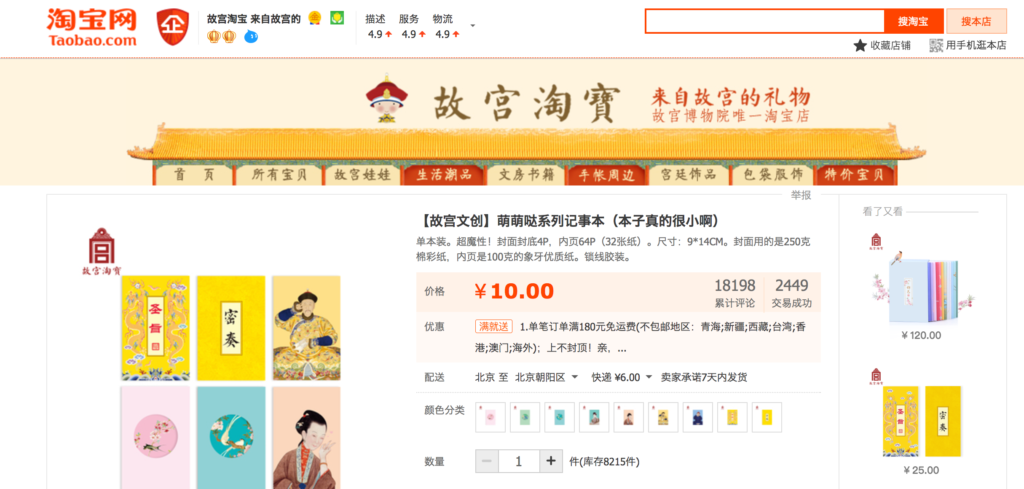
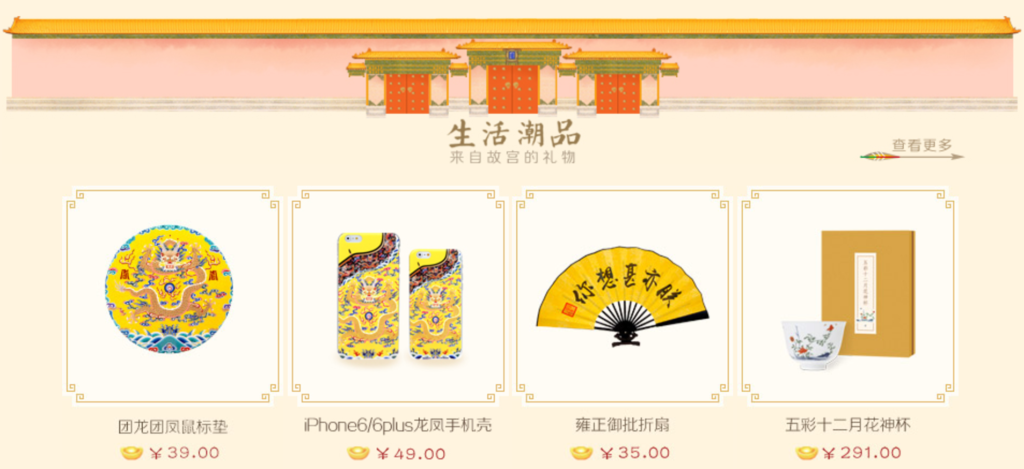
A selection of merchandizes on the National Museum's Taobao shop.
But it wasn’t until 2014 when a beaded necklace/earphone product went viral on social media that Chinese netizens were fully turned on to the Museum's creative products. A popular Chinese influencer on Weibo wrote an article praising the creativity of the earphone, and the post was soon retweeted over 16,000 times. The Museum's Taobao store quickly received massive popularity among the millennial generation, as netizens suddenly discovered the ancient, daunting historical figure has now become much more fun, chilled and humorous, communicating with its internet followers in a relaxing way that no Chinese museums had ever did in the past.
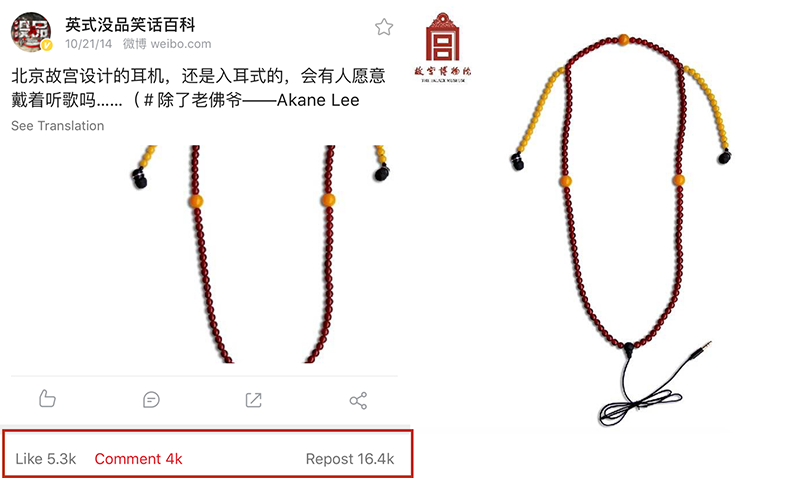
A Weibo influencer's post on the beaded earphone received 16,400 reposts and over 4,000 comments.
With the success of Taobao store, the Museum became more active in expanding its ways to reach the public audience. In late 2014, it opened another online store on T-mall, selling tickets, publications, and more culture-focused merchandize targeting a more mature market. The Palace Museum also collaborated with Alibaba’s flash-sale platform Juhuasuan and successfully sold over 16,000 pieces of products within a day. In 2016, the Museum collaborated with China's trending fashion blogger Becky's Fantasy for a set of delicately designed, limited edition jewelries, which completely sold out within 20 minutes. Merchandizes quickly became a significant part of the Museum's overall revenue: as director Mr. Shan told to media, in 2015, the Museum's sales of creative merchandizes reached over 1 billion RMB, and online sales contributed to over 40% of the total number.
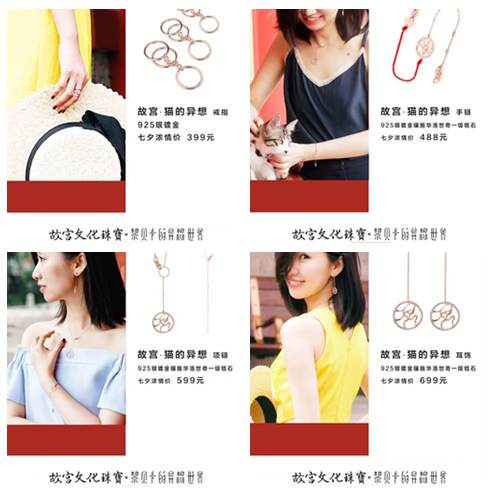
Jewelry collaboration with Chinese fashion blogger Becky's Fantasy.
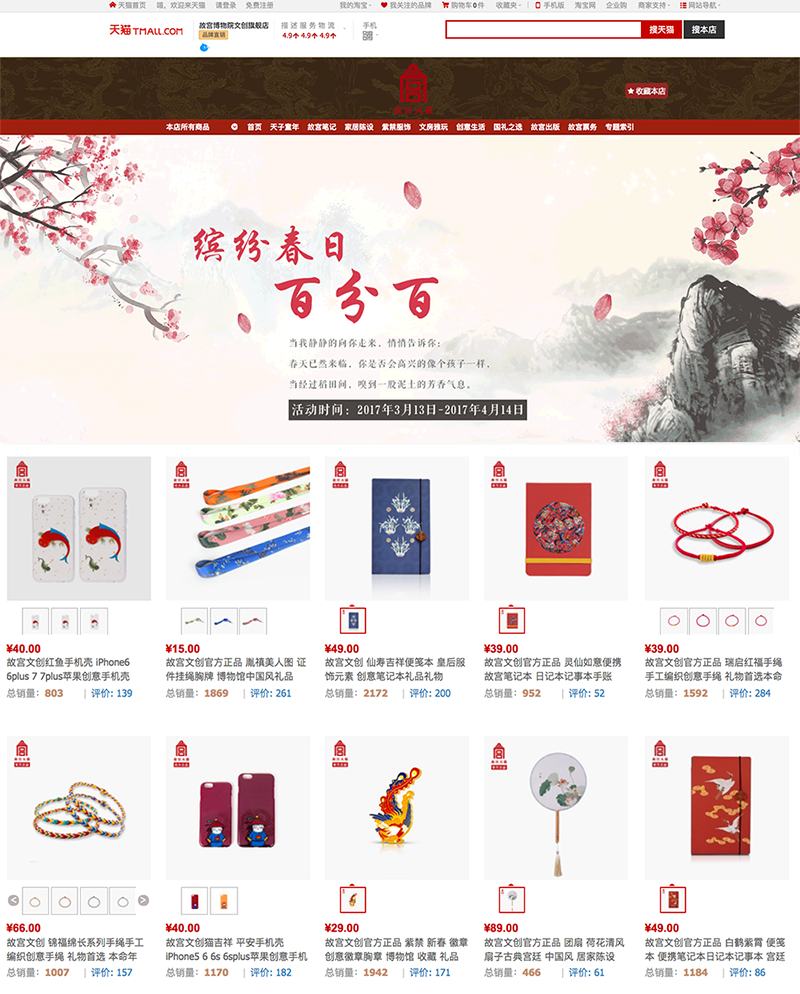
To differentiate market, the Museum's T-mall shop has a more high-end appeal than its Taobao counterpart.
The Palace Museum has broken the restrictions of its physical brick walls to become a diversified, much more accessible figure thanks to its embracement of technology: for every exhibition it has nowadays, various departments of the museum would work together to present a holistic experience for the audience. Apart from the physical exhibition itself, visitors could also purchase customized merchandizes, download apps designed by the IT department that provides vivid visual tours and bonus historical guides.
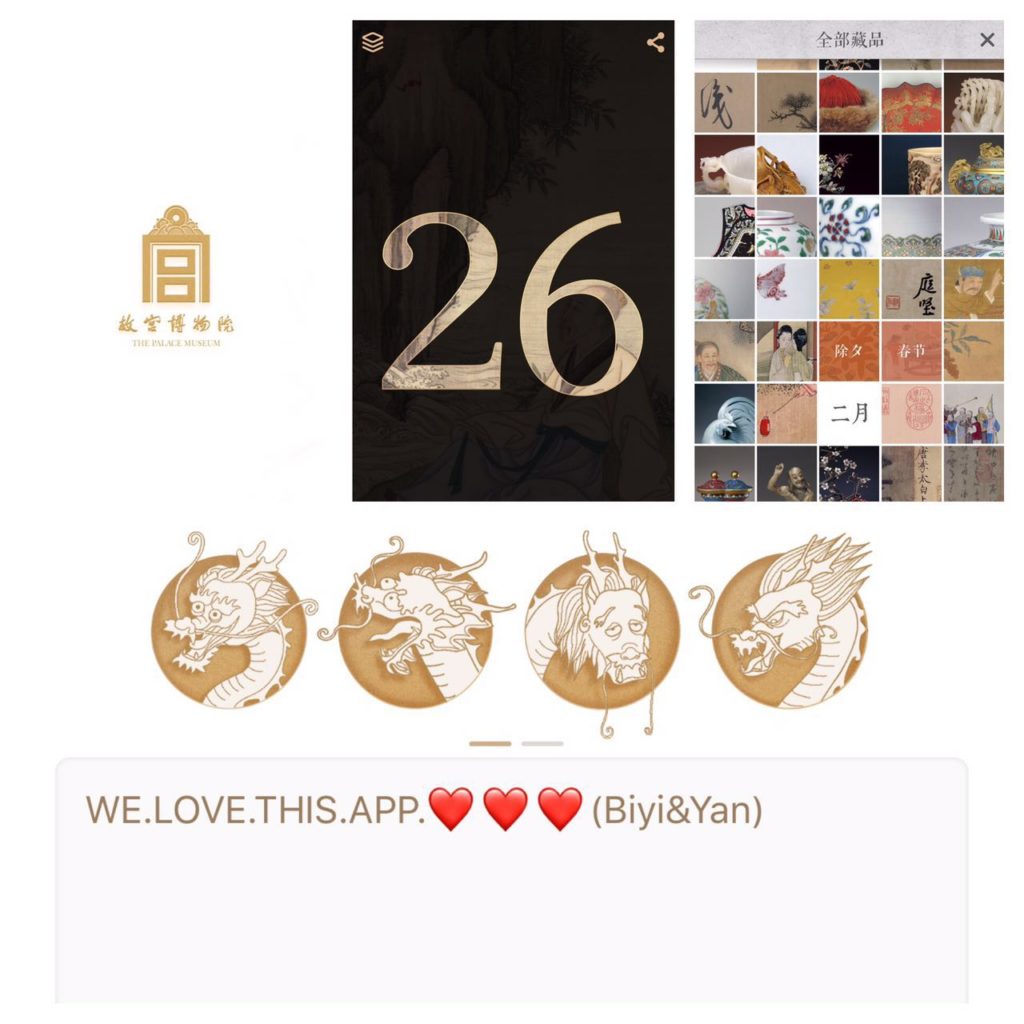
"Daily Forbidden City", the Museum's stunning calendar app that we fell in love with while doing research...
Today, people no longer just think of the Museum when they are there, but rather are carrying it with them whenever they go: it could be a customized notebook inside your handbag, a digital calendar on your phone's home screen, a popular post you liked on Weibo. It is a museum, a historical landmark, a Chinese heritage and a cultural treasure, but more importantly, it is a wholesome, relatable, and authentic experience true to its own character.
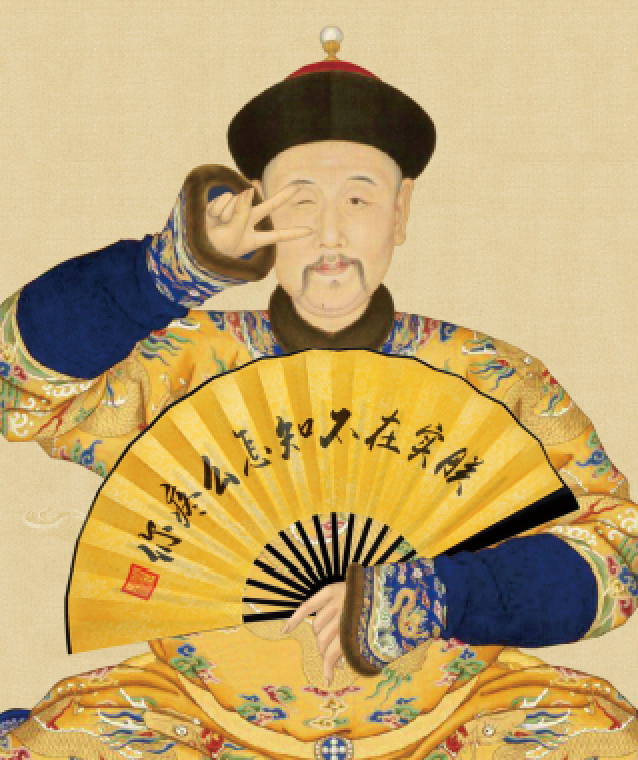
“I can't love you more”-the Museum's creative team found a hand-written quote from Yongzheng Emperor's letter to his minister and used it as a slogan on social media. (and of course it went viral- how adorable is this?)
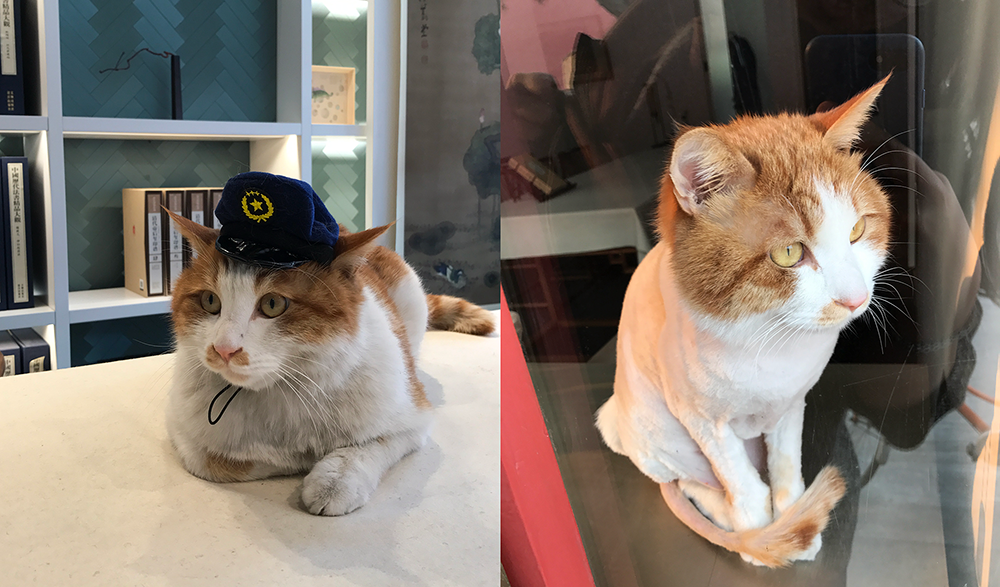
Bonus photo: Forbidden City's social media star Mr. Meow, (故宫喵) before-and after-shave. We feel you Mr. Meow, we feel you...
